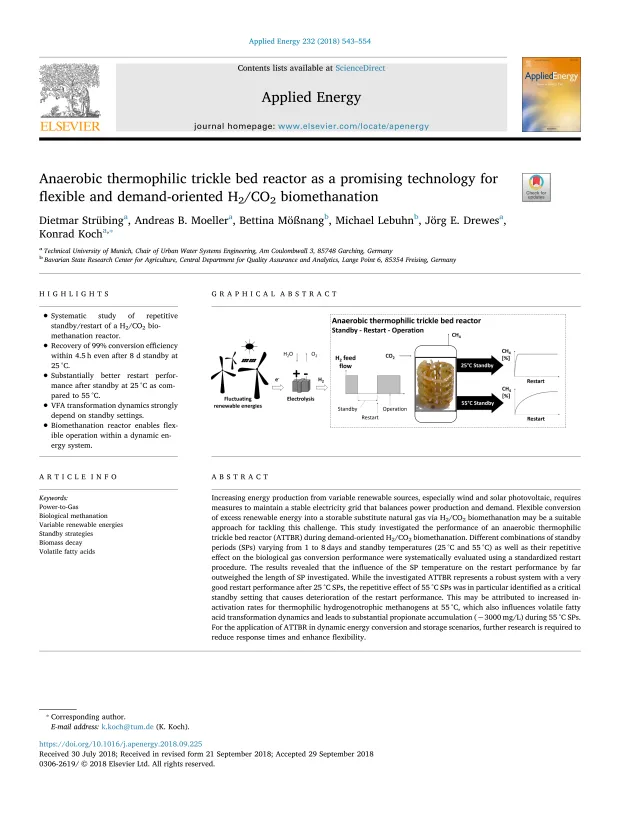Increasing energy production from variable renewable sources, especially wind and solar photovoltaic, requires measures to maintain a stable electricity grid that balances power production and demand. Flexible conversion of excess renewable energy into a storable substitute natural gas via H2/CO2 biomethanation may be a suitable approach for tackling this challenge. This study investigated the performance of an anaerobic thermophilic trickle bed reactor (ATTBR) during demand-oriented H2/CO2 biomethanation. Different combinations of standby periods (SPs) varying from 1 to 8 days and standby temperatures (25 °C and 55 °C) as well as their repetitive effect on the biological gas conversion performance were systematically evaluated using a standardized restart procedure. The results revealed that the influence of the SP temperature on the restart performance by far outweighed the length of SP investigated. While the investigated ATTBR represents a robust system with a very good restart performance after 25 °C SPs, the repetitive effect of 55 °C SPs was in particular identified as a critical standby setting that causes deterioration of the restart performance. This may be attributed to increased inactivation rates for thermophilic hydrogenotrophic methanogens at 55 °C, which also influences volatile fatty acid transformation dynamics and leads to substantial propionate accumulation (∼3000 mg/L) during 55 °C SPs. For the application of ATTBR in dynamic energy conversion and storage scenarios, further research is required to reduce response times and enhance flexibility.
